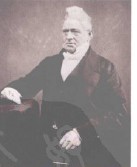According to the University of Chicago paleontologist David Raup,
根據(jù)芝加哥大學(xué)古生物學(xué)家戴維.諾普的觀點(diǎn),
the background rate of extinction on Earth throughout biological history has been one species lost every four years on average.
在整個(gè)生物史上,地球上的物種滅絕速度一直是平均每年有一個(gè)物種滅絕。
According to one recent calculation, human-caused extinction now may be running as much as 120,000 times that level.
理查德.利基和羅杰.盧因在《第六次滅絕》一書(shū)中說(shuō),現(xiàn)在,人類所造成的物種滅絕數(shù)量可能高達(dá)那個(gè)速度的12萬(wàn)倍。
In the mid-1990s, the Australian naturalist Tim Flannery, now head of the South Australian Museum in Adelaide,
20世紀(jì)90年代中期,澳大利亞博物學(xué)家、現(xiàn)任阿德萊德南澳大利亞州博物館館長(zhǎng)提姆.弗蘭納里
became struck by how little we seemed to know about many extinctions, including relatively recent ones.
開(kāi)始對(duì)我們對(duì)許多已經(jīng)滅絕的物種,包括最近滅絕的物種所知甚少而感到吃驚。
Wherever you looked, there seemed to be gaps in the records—pieces missing, as with the dodo, or not recorded at all,
不論在什么地方,你都可以發(fā)現(xiàn)記錄資料存在很多空白——不是殘缺不全,比如關(guān)于渡渡鳥(niǎo),就是根率沒(méi)有記錄。
he told me when I met him in Melbourne a year or so ago.
2002年初,他在墨爾本這樣告訴我。
Flannery recruited his friend Peter Schouten, an artist and fellow Australian,
弗蘭納里聘請(qǐng)了他的朋友彼得.斯科頓,他是一位澳大利亞畫(huà)家。
and together they embarked on a slightly obsessive quest to scour the world's major collections to find out what was lost, what was left, and what had never been known at all.
他們一起對(duì)世界的主要收藏標(biāo)本進(jìn)行了比較認(rèn)真的考證,以發(fā)現(xiàn)什么東西消失了,什么東西遺漏了,什么東西我們一無(wú)所知。
They spent four years picking through old skins, musty specimens, old drawings, and written descriptions— whatever was available.
他們用了4年的時(shí)間,從舊毛皮、發(fā)出難聞氣味的標(biāo)本、古畫(huà)、文字描述——總之是從他們找得到的一切東西中尋找資料。
Schouten made life-sized paintings of every animal they could reasonably re-create, and Flannery wrote the words.
然后,斯科頓盡可能地照實(shí)物大小為每一種動(dòng)物畫(huà)了像,弗蘭納里則撰寫(xiě)文字介紹。其結(jié)果是一本名為《自然的缺環(huán)》的書(shū)的問(wèn)世。

The result was an extraordinary book called A Gap in Nature, constituting the most complete—and, it must be said, moving— catalog of animal extinctions from the last three hundred years.
這本書(shū)最完整地——必須說(shuō),最生動(dòng)地記載了最近300年里滅絕的動(dòng)物種類。
For some animals, records were good, but nobody had done anything much with them, sometimes for years, sometimes forever.
有些動(dòng)物,盡管資料還算比較多,但是有時(shí)好多年無(wú)人去作多少研究,有時(shí)根本無(wú)人問(wèn)津。
Steller's sea cow, a walrus-like creature related to the dugong, was one of the last really big animals to go extinct.
施特萊發(fā)現(xiàn)的海牛,一種與海象相像、與人魚(yú)有關(guān)的動(dòng)物,就是最后一批滅絕的大型動(dòng)物之一。












